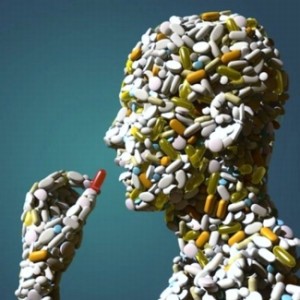Why aren’t celebrities talking about this instead of spouting off about gun control? We should be looking for REASONS our kids are so messed up.

The rate of kids being poisoned by ADHD medications – accidentally and intentionally – has soared since 2000 – with thousands of under-6s taking them accidentally as teens use them to get high.
Between 2000 and 2014, around 10,000 children under 19 were hospitalized, and three died after taking methylphenidate or amphetamine.
That rate is climbing steadily: in 2014, poison call centers received 11,500 calls about children suffering reactions to these medications, up 60 percent from the 7,000 calls in 2000.
The vast majority of calls (82 percent) were accidental, largely involving young children who had taken pills that weren’t properly stored.
The rest involved teenagers deliberately taking the pills to get ‘high’ or attempt suicide.
Experts warn the findings, published today by Nationwide Children’s Hospital, should be a red flag to parents and doctors that these medications can have severe side effects, as ADHD diagnoses and prescriptions increase year-on-year.
Indeed, just last week another report showed that child prescriptions for ADHD medications are soaring in the US, despite a downturn in all other prescriptions.
‘We now have two studies showing that prescriptions for ADHD medications are going up, so we need to be aware that these medications have these severe side effects,’ lead author Dr Gary Smith, director of the Center for Injury Research and Policy, told Daily Mail Online.
‘Even just one pill can have an effect.
‘Households with kids under six years of age should think keep medications up away from children and should not be left out.
‘In older age groups, in teens, about half of the exposures in that age group were intentional. We need to be aware of this.’
For the study, published in the journal Pediatrics, the researchers analyzed National Poison Data System data from 2000 to 2014, focusing on pediatric ADHD medication exposures.
Between 2000 and 2014, there were 156,365 exposures reported to US poison control centers related to ADHD medications.
They found there were approximately 2.5 calls a week, or one call every 50 minutes.
In terms of the type of medication, it was fairly even: methylphenidate accounted for 46.2 percent of cases, and amphetamine accounted for 46.2 percent and 44.5 percent.
The number of cases increased 71.2 percent from 2000 to 2011, followed by a 6.2 percent decrease from 2011 to 2014.
Three quarters (76 percent) of exposures involved children under 12 years old.
Over the entire period of the study, the most common reason for exposure was by accident – 41.6 percent.
Among teens, the most common reason for a call to a poison center (50.2 percent) was after taking the drugs intentionally, either for a ‘high’ or, the team suspects, a suicide attempt.
The majority of cases (60.4 percent) did not receive care, but 6.2 percent were taken to hospital, and there were three deaths.
The increasing number and rate of reported ADHD medication exposures during the study period is consistent with increasing trends in ADHD diagnosis and medication prescribing.
Exposures associated with suspected suicide or medication abuse and misuse among adolescents are of particular concern.
‘We did expect to see that the intentional ingestions would be higher among teens, but I think this study underscores how important those exposures are,’ Dr Smith said.
Written by Mia De Graaf and published by The Daily Mail ~ May 21, 2018.
 FAIR USE NOTICE: This site contains copyrighted material the use of which has not always been specifically authorized by the copyright owner. We are making such material available in our efforts to advance understanding of environmental, political, human rights, economic, democracy, scientific, and social justice issues, etc. We believe this constitutes a ‘fair use’ of any such copyrighted material as provided for in section 107 of the US Copyright Law. In accordance with Title 17 U. S. C. Section 107, the material on this site is distributed without profit to those who have expressed a prior interest in receiving the included information for research and educational purposes. For more information go to: http://www.law.cornell.edu/uscode/17/107.shtml“
FAIR USE NOTICE: This site contains copyrighted material the use of which has not always been specifically authorized by the copyright owner. We are making such material available in our efforts to advance understanding of environmental, political, human rights, economic, democracy, scientific, and social justice issues, etc. We believe this constitutes a ‘fair use’ of any such copyrighted material as provided for in section 107 of the US Copyright Law. In accordance with Title 17 U. S. C. Section 107, the material on this site is distributed without profit to those who have expressed a prior interest in receiving the included information for research and educational purposes. For more information go to: http://www.law.cornell.edu/uscode/17/107.shtml“
